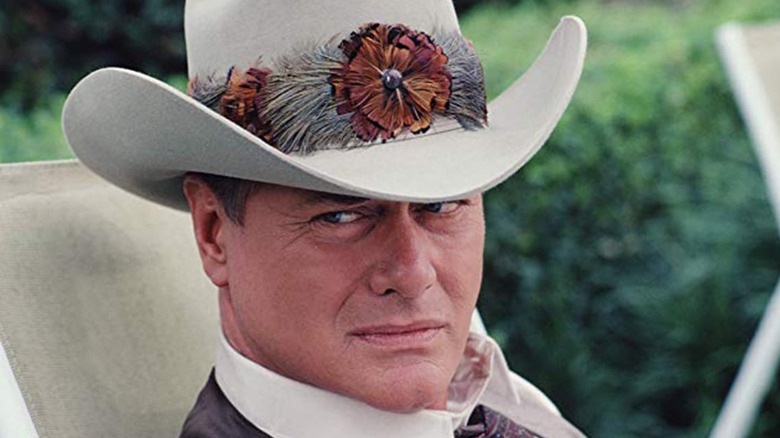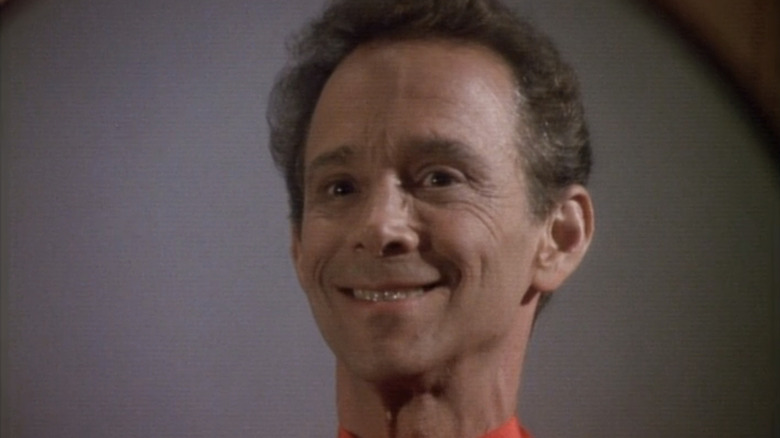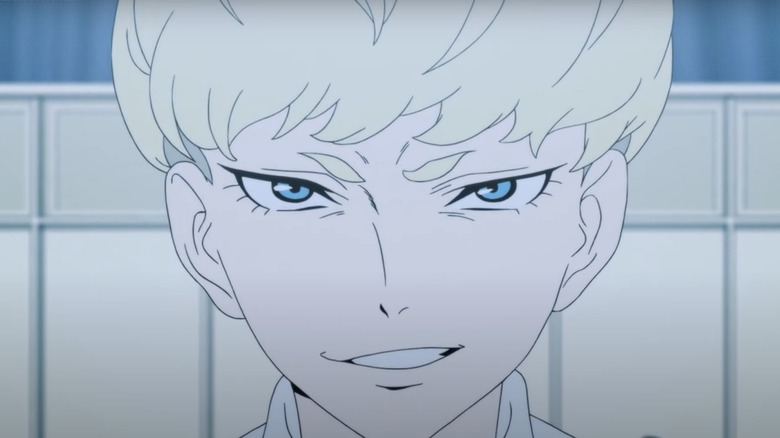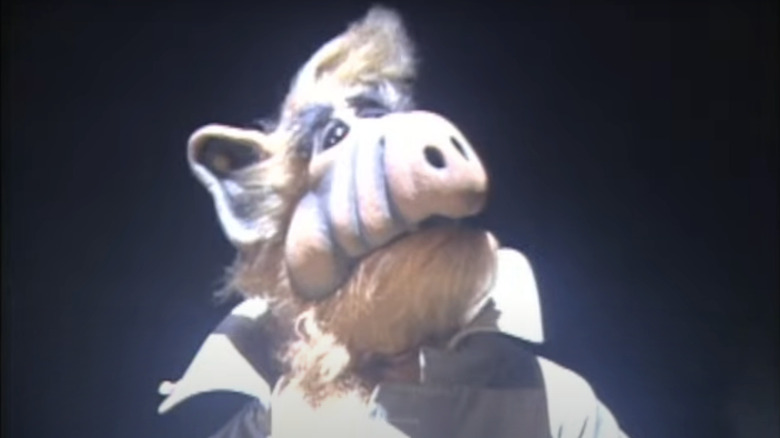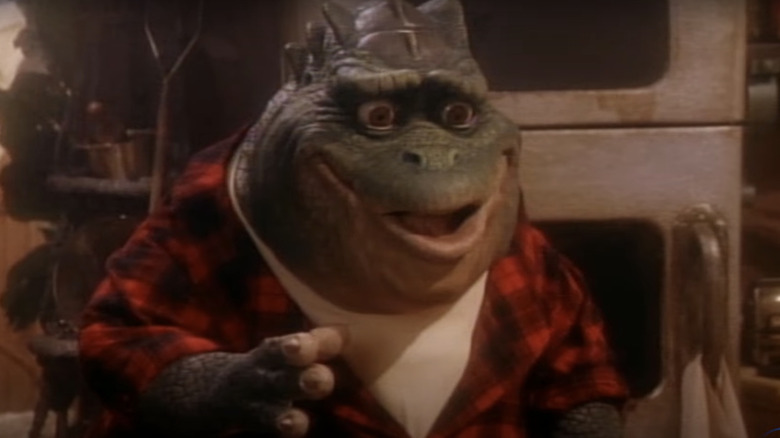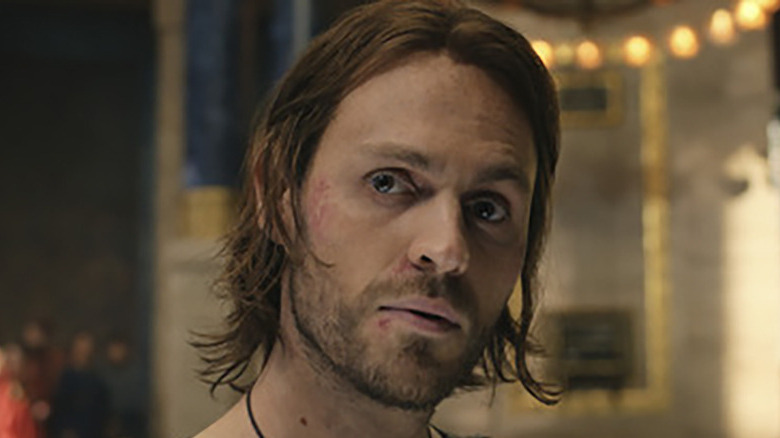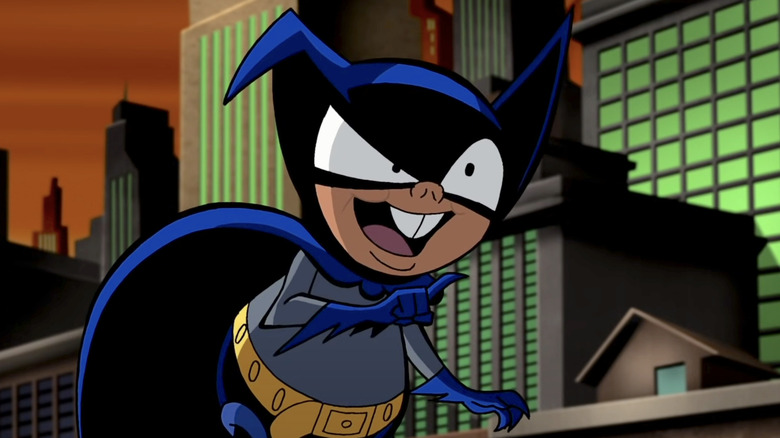Six TV Shows Where The Villain Actually Wins
Everyone loves a happy ending, especially when it comes to television shows. After hours and hours of investment in the same characters, viewers almost certainly want them to achieve their dreams, overcome all odds, and defeat their enemies. The overwhelming majority of finales deliver such happy resolutions, and many of the best finales go even further. But not every hero can win, and sometimes a great ending means letting a deserving (or just popular) villain come out on top.
It's rare, but there are indeed TV shows where the villain actually wins. To make the phenomenon even more rare, most cases that seem like a villainous victory are more accurately an antihero at the end of their dark, descending character arc; sure, Walter White may be a bad guy, but in the world of "Breaking Bad," he's not the bad guy.
Below, a breakdown of some real villains who got their way by the end of a series, ranging from an evil corporate head (or two) to a demon (again, or two) to even an inter-dimensional fanboy-turned-world-ender (thankfully, there's only one of those). Here, then, are six TV show villains who actually won in the end.
Dallas
A pillar of the soap opera genre and a primetime staple in the '80s, "Dallas" still makes lists of best-ever TV series; the series won multiple Emmys, spawned a hit spinoff that ran for over 350 episodes and ran for some 14 seasons, racking up a whopping 356 episodes and becoming one of the longest-running series in its genre of all time.
During the show's 1978-1991 run, its characters, subjects, and settings changed repeatedly, which makes it hard to name one concrete protagonist/antagonist pairing. However, true to the cutthroat nature of "Dallas," no matter which of the contending heroes or villains you choose, the bad guy ends up winning in the end.
The core conflicts in "Dallas" are twofold: primarily, the feud between the Ewings and the Barnes families, two Texas clans made wealthy by their successes in the oil business; secondarily, the many feuds within the Ewings. The protagonist (insofar as there was one for the series run) could be seen as one of two Ewings: either the honorable Bobby, or the conniving yet fascinating J.R. No matter how you slice it, both eventually lost out to their villains.
Bobby, with his simple desire for love and peace, and his more complicated desire to live morally in an amoral setting, fails on both counts. J.R., whose truest desires are wealth and power, also fails on both counts by the time of his death. He loses his beloved Ewing Oil to his arch-rival Cliff Barnes, and in the series finale, seemingly takes his own life — at the urging of the villainous Adam, evidently an actual demon.
Devilman Crybaby
Though the extended back and forth of a series like "Dallas" can make pinpointing the success of their villain(s) hard, the blatant good vs. evil, human vs. Devil plot of a show like "Devilman Crybaby" makes calling the ultimate winner a sulfurous breeze.
The main conflict in this anime is between protagonist Akira and the many legions of hell, a war important enough for Akira to transform into the Devilman in order to very literally fight fire with fire. Akira loses and the demons win, but just how utterly complete the respective loss and victory are will surprise anyone who hasn't already finished the series.
For approximately the first half of "Devilman Crybaby," Akira and his friend Ryo are attempting to kill any demons they encounter — a seemingly clear-cut hero vs. villain situation. Later, Ryo's strategy changes, and he begins alerting the world's population to the demons, which causes planet-wide panic and upheaval. It's both an unfortunate strategy and a byproduct of Ryo's true nature: Satan reborn in human form.
Ryo/Satan actually has the same goal as his fellow hellspawn, namely the complete eradication of humanity. By the ending of "Devilman Crybaby," Ryo and the demons have succeeded — in their fear and mistrust, humanity has rendered themselves extinct. The villains have won so thoroughly, in fact, that God himself is forced to destroy the entire planet and try again.
ALF
You might be surprised to know that a laugh-track-laden, goofy '80s sitcom about a lovably wry puppet and his surrogate family ends with the villains winning — if so, you don't remember the final episode of "Alf."
This benign, half-hour sitcom wasn't interested in wrapping up its sitcom trappings storylines with neat little bows — which, in some ways, accurately reflected the offbeat, outsider vibe that gave the series its unique charm. Ultimately, the titular cat-eating alien from Melmac lost to his main villain: The clandestine military unit known as the Alien Task Force.
ALF's goal throughout the series had been to remain safely hidden on Earth from those who would do him harm. To that end, most recurring plot lines in the show involved the Tanners, ALF's new family, keeping the alien hidden from their neighbors, extended family, and of course, the Alien Task Force. The show ran for four seasons, totaling 102 episodes, and 101 of those episodes concluded with ALF still safe in the Tanners' care, often having solved some minor family drama and become closer because of it. In the closing minutes of the finale, however, just as ALF appears headed towards a happy ending, he instead gets taken away by the faceless jackboots of the Alien Task Force; even as the laugh track continues to ring in the ears of the viewer, the fate of the beloved alien is left both uncertain and likely horrifying.
Dinosaurs
If you scour the history of sitcoms, you'll have a hard time keeping track of all the series whose family patriarchs work for greedy, uncaring bosses and nondescript, problematic mega-corporations. In many, that boss or the company they work for becomes the protagonist's most frequent villain, always there to foil the lovable hero's happiness in favor of advancing company profits.
Despite its unique setting, the ABC sitcom "Dinosaurs" was no different, placing family dad Earl Sinclair ever at odds with his boss (B.P. Richfield) and company the WESAYSO Development Corporation. Surprisingly, the series finale had WESAYSO emerging triumphant over essentially everyone, even in the face of a total dinosaur apocalypse.
Environmentalism was a major theme of "Dinosaurs," so much so that The A.V. Club called it "as blunt an environmental message as any major network TV broadcast since 'The Lorax.'" The head of that blunt weapon was WESAYSO, who engaged in every environmentally-irresponsible action a company could, their sole goal to turn nature's green into financial green. In the series finale, they got their wish: their reckless greed leads to an ice age, which they successfully exploit to turn record-breaking profits. The Sinclairs and all the other dinosaurs may be doomed, but the evil WESAYSO corporation performs better than ever.
The Lord of the Rings: The Rings of Power
It's true, "The Lord of the Rings: The Rings of Power" ends with its villain, the Dark Lord Sauron, on top, winning out over the combined might of the Free Peoples of Middle Earth. You may understandably have an immediate rebuttal or two — namely, that it is known Sauron is eventually defeated by Frodo and that "The Rings of Power" isn't even over yet. Yet Sauron (aka Halbrand) has already emerged from Season 1 victorious, and is destined to be the ultimate winner of the series due to its scope and setting, which doesn't extend to the triumphant deeds of Frodo, Aragorn, and company at all.
"The Rings of Power unites all the major stories of Middle-earth's Second Age," showrunners J.D. Payne & Patrick McKay told Variety in 2022. "The forging of the rings, the rise of the Dark Lord Sauron, the epic tale of Númenor, and the Last Alliance of Elves and Men."
As Season 1 ended, the first rings were forged, already a monumental victory for the great corruptor Sauron. With the series set firmly in the Second Age, the worst that could befall Sauron in the series is his defeat at the hands of Isildur — merely a partial, temporary defeat.
Despite the Last Alliance of Elves and Men forming at the end of the age and cutting the ring from Sauron's finger, the Dark Lord is still the age's victor. The great heroes Elendil and Gil-Galad are slain, the Last Alliance is broken, and Isildur is corrupted and killed by the One Ring.
Batman: The Brave and the Bold
Fans stuck to their bat-shaped, bat-logoed guns when they declared that the 2008-2011 animated series "Batman: The Brave and the Bold" concluded with one the best endings of any superhero show to date. In a major, meta-contextual way, the series devised one of the best endings they could ever have.
Knowing a series finale was imminent, the show's writers chose to end things in-universe as much as they were ending in the real-world. It revolved around interdimensional traveler Bat-Mite, a Batman nuisance and fan who later became a foe. Bored with the tone and formula of the lighthearted series, Bat-Mite (voiced by Paul Reubens) decided to "cancel" it by destroying the entire universe.
At several points throughout "Batman: The Brave and the Bold," Bat-Mite professed his love for Batman, calling himself the hero's biggest fan. His mission for most of the series, therefore, was simply to help tell Batman's greatest stories, doing so in anthology episodes like "Bat-Mite Presents: Batman's Strangest Cases!"
After deeming this version of Batman too childish, however (a wink-wink reference to a frequent fan criticism of "Bold"), Bat-Mite turns on Batman in the final episode, manipulating his reality and forcing the show's cancellation. Because Bat-Mite hails from the fifth dimension, his advanced technology and ability to alter lower realities like the cartoon render him essentially unbeatable by someone as simple as Batman. Naturally, Batman loses to Bat-Mite, only winning himself a few moments to wave goodbye as his series and reality are forever erased.
